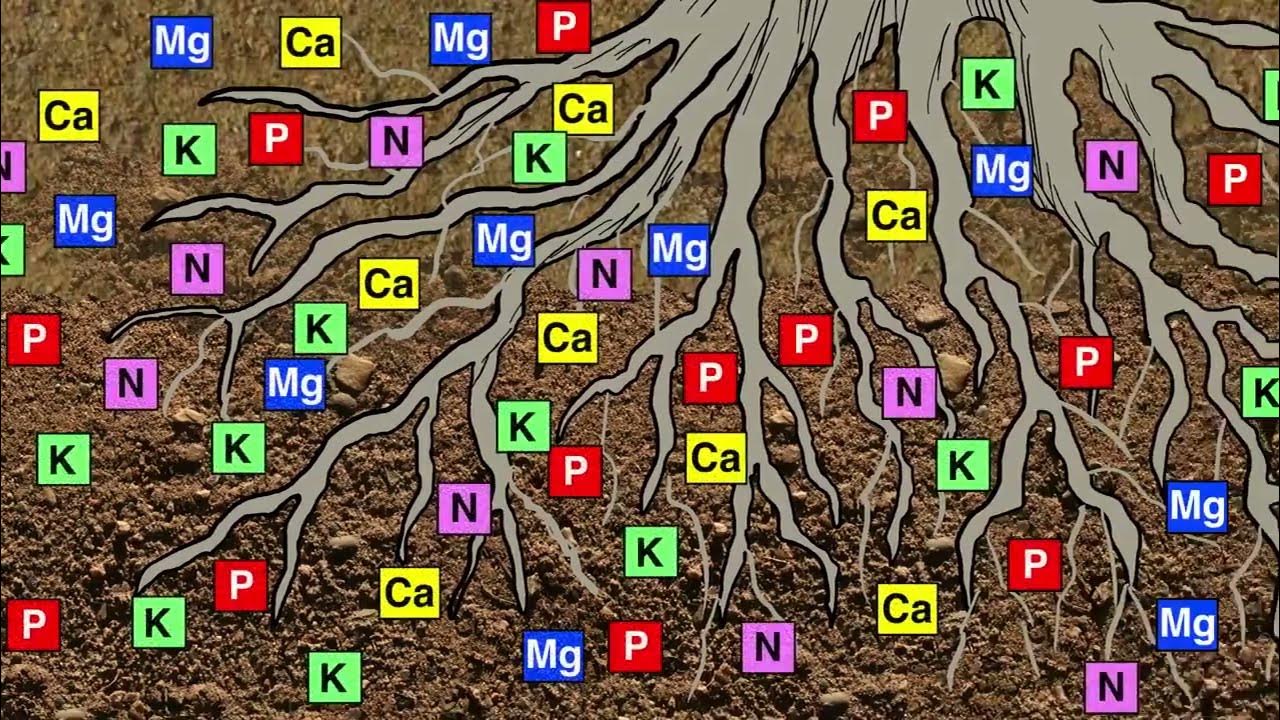Soil
Summary
TLDRThis video delves into the importance of soil and its role in maintaining a healthy ecosystem. The speaker emphasizes how soil is a living organism made up of various microorganisms and organic materials, and how improper practices like tilling, chemical fertilizers, and soil exposure can degrade its health. The speaker advocates for building healthy soil through low-maintenance methods like cover cropping, mulching, and composting. By treating soil as a vital, living web, the video encourages sustainable gardening practices that improve soil fertility and support long-term environmental health.
Takeaways
- 😀 Soil is a living organism, crucial for life, containing trillions of microorganisms that help plants thrive.
- 😀 The ideal soil is a mixture of sand, silt, and clay, known as loam, but soil types vary depending on location.
- 😀 Tilling soil repeatedly damages its delicate ecosystem by breaking apart life forms and compacts the soil, leading to degradation.
- 😀 Cover crops like daikon radish and legumes help loosen the soil and prevent degradation by mimicking tilling processes without harming the soil's web of life.
- 😀 Soil acts as a sponge that absorbs rainwater and slowly releases it, helping maintain water cycles and support plant growth.
- 😀 Avoid chemical fertilizers, which harm soil organisms by disrupting natural processes, leading to long-term soil degradation.
- 😀 Exposing soil to the elements without protection can lead to erosion, nutrient loss, and damage to water bodies through runoff.
- 😀 Mulching with materials like straw, leaves, and shredded paper helps retain moisture, suppress weeds, and protect the soil from degradation.
- 😀 Composting is essential to reduce waste and improve soil health by converting food scraps and organic matter into nutrient-rich humus.
- 😀 The practice of building soil health requires patience, a living web approach, and using natural, low-impact methods to enhance soil vitality.
Q & A
What is the acronym for soil mentioned in the script, and what does it stand for?
-The acronym for soil mentioned in the script is 'SOIL,' which stands for 'Sustainable Organic Integrated Livelihoods.'
What is the difference between soil and dirt, according to the speaker?
-The speaker defines soil as a living, organic system that is essential for life, whereas dirt is described as the dead, inorganic remains of things.
Why is soil considered a living web?
-Soil is considered a living web because it consists of microorganisms, macroorganisms, fungi, algae, and humus, all of which interact in harmony to support life and thrive. Without these organisms, soil would not function as it does.
What are the main components of ideal soil?
-The ideal soil is a loam mixture, which consists of a balanced combination of sand, silt, and clay.
What are some of the negative effects of tilling soil?
-Tilling disrupts the interwoven web of life in the soil, chopping up microorganisms and causing them to die. It temporarily aerates the soil and provides a boost of nutrients, but this effect is short-lived and leads to soil compaction, erosion, and a reduction in soil quality over time.
Why is it important to avoid using chemical fertilizers?
-Chemical fertilizers are harmful because they disrupt the balance of soil organisms, killing off beneficial microorganisms. The speaker compares them to a self-checkout at the grocery store, where the soil organisms are replaced by the chemicals, which prevents the soil from being nourished naturally.
How does leaving soil exposed negatively affect it?
-Exposing soil to the elements invites erosion, reduces moisture retention, and degrades the soil. Exposed soil also attracts birds and insects that eat the life within the soil, further damaging it.
What are some alternative methods to tilling for improving soil structure?
-Instead of tilling, the speaker suggests using cover crops like daikon radish, legumes, and grasses, as well as allowing insects and roots to break up the soil naturally. These methods help improve soil structure without causing long-term damage.
What role do cover crops play in soil health?
-Cover crops, such as legumes, fix nitrogen in the soil, improve soil structure, and help prevent erosion. They also provide organic matter that can decompose and enrich the soil, making it healthier over time.
What are some effective mulching techniques for protecting soil?
-Effective mulching techniques include using straw (not hay), shredded paper, cardboard, or wood mulch to cover the soil. Mulching helps retain moisture, suppress weeds, and create a habitat for soil organisms while gradually decomposing into valuable organic matter.
Outlines

This section is available to paid users only. Please upgrade to access this part.
Upgrade NowMindmap

This section is available to paid users only. Please upgrade to access this part.
Upgrade NowKeywords

This section is available to paid users only. Please upgrade to access this part.
Upgrade NowHighlights

This section is available to paid users only. Please upgrade to access this part.
Upgrade NowTranscripts

This section is available to paid users only. Please upgrade to access this part.
Upgrade Now5.0 / 5 (0 votes)





